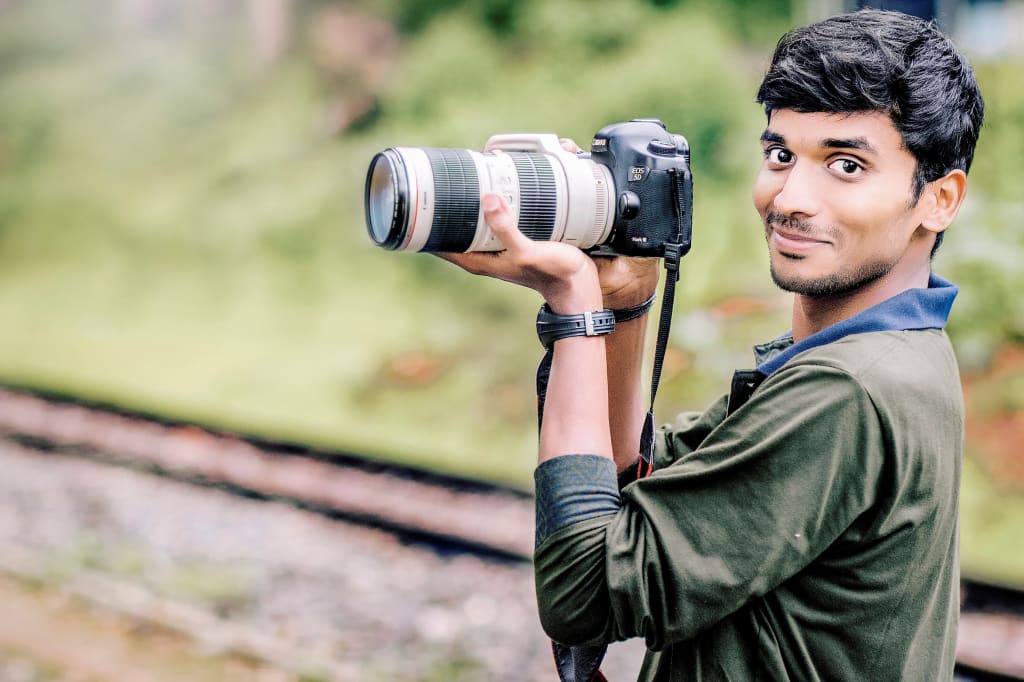How to Kill It With Your Portrait Photography
Learn these five essential skills

Photo by Aravind Kumar on Unsplash
One of the most common types of photography is portraiture. Whether shooting snaps of your family, people on the street, or formal studio portraits, this genre requires a certain mindset and techniques to be successful. I have shot individual portraits, and I have shot 80 corporate headshots in a two-day marathon. These five critical skills apply to any type of portraiture
Know Your Equipment
Knowing your equipment applies to any photography but is especially true for portraits. A building or landscape doesn’t mind if you fumble with your camera or controls, but a person will lose patience, and, more importantly, confidence in you as a photographer. You can’t get in front of a model or client and get confused and flustered. If you are confident, they will be comfortable, and that comfort will come through in the final image.
Practice with your camera until you can change any setting quickly without looking at it, especially aperture and shutter speed. Get used to scanning the settings in your viewfinder until this is second nature on every shot. Working with people is tricky enough without adding the pressure of needing to remember how to do something on the camera at the same time.
Pro Tip: Sit in a dark room and turn on the TV. That’s your subject. Take shots, changing your settings between each one until you can do it without looking at the camera.
Take Your Time
How much time? It depends on the subject and situation. If you are shooting a model in your studio, you have plenty of time. If you are shooting corporate headshots, you have about 10 minutes. If you are asking a stranger to stop on the street to pose for you, you have about two minutes.
But regardless, you have more time than you think. If you know your equipment, two minutes is a lot of time. The actual image will take a fraction of a second. You can afford to spend a minute thinking about the image and what you want to convey. While you are talking to the subject, think about the light, the background, and your composition. Taking a bit of time before and while you are shooting will make for much better portraits.
Pro Tip: Even if you aren’t interested in street photography, practice it anyway. Talking to strangers, getting them at ease, and nailing a portrait in two minutes or less, will give you skills that would take years in a studio.
Talk to the Subject
Talking to the subject goes hand in hand with taking your time and is just as, or more, important. Whether a family member, a professional model, or a stranger on the street, you need to make the subject feel at ease and confident in your ability. If you are nervous and hurried, they will be too, and it will show in your final image.
Tell them what you have in mind and what you need them to do. Do you want them to smile or be serious? Should they look at you or look away from the camera? How do you want them posed, sitting, or standing?
If you approach a stranger on the street, don’t just say, “Can I take your picture?” Introduce yourself and tell them what you are doing and why. Connect with them. You can always just say you are a photography student. Tell them it will only take a couple of minutes and then stick to that. You can get a lot of work done in two minutes if you properly prepare yourself. Be confident and calm, giving them direction, rather than looking intimidated and rushed. You are taking portraits, not just snapping pictures. It will put them at ease, and that will make for a better image.
If you are shooting models or headshots, your lights will be in place and set. Know and communicate how you want them to sit or stand, and which way to look. A few simple directions will raise their confidence in you, and make the session go much smoother.
Pro Tip: Work with kids when you can. If you can get kids to trust you and get comfortable enough to pose naturally, you can shoot anyone.
Be Ready for the Decisive Moment
You will want to take enough pictures to make sure you capture the essence of your subject. The first few shots are just to warm yourself and the subject up while getting into a flow. Once you are both at ease, and you begin giving them direction, they will get to be more at ease and open up a bit. This is the time when you need to be ready to capture that expression or gesture that will nail the shot.
From the moment you introduce yourself and the whole time you are talking to them, watch their expressions. There is a look or a gesture that they may not even be aware of, that is the essence of their personality. You want to capture that look to capture that essence. Being able to recognize this moment and capture it effectively will come with time and experience, so think about it on every shoot.
Pro Tip: Back to the streets. Spend some time in a crowded public place, taking candid portraits. In a short amount of time, you will get dozens of opportunities for spotting and nailing that decisive moment
Master the Technical Aspects
Knowing your equipment is one thing. Understanding how to nail the technical aspects of every shot requires practice and experience. Always make sure that the eyes are sharp. Use a large enough aperture to throw the background out of focus, but small enough that the subject’s entire face is in focus. Achieve the proper balance of separation between you and the subject, as well as the subject and background.
If you are shooting in a studio, get the lighting just right, and pay attention to the light on the background. There should be a clear separation between the subject and the background. Use a hair light where necessary. Study and understand the technique of portrait photography and practice these technical aspects until they become second nature.
Pro Tip: Get yourself a mannequin. Check with local department stores, or order one online if necessary. Practice different lighting techniques until you can nail it every time quickly.
Just as with any other type of photography, portraiture is specialized and has its specific techniques. Learn these techniques and practice them, and you will learn to kill it with your portrait photography.
If you enjoyed this article, please consider dropping me a tip below. Thanks for reading
About the Creator
Darryl Brooks
I am a writer with over 16 years of experience and hundreds of articles. I write about photography, productivity, life skills, money management and much more.






Comments
There are no comments for this story
Be the first to respond and start the conversation.